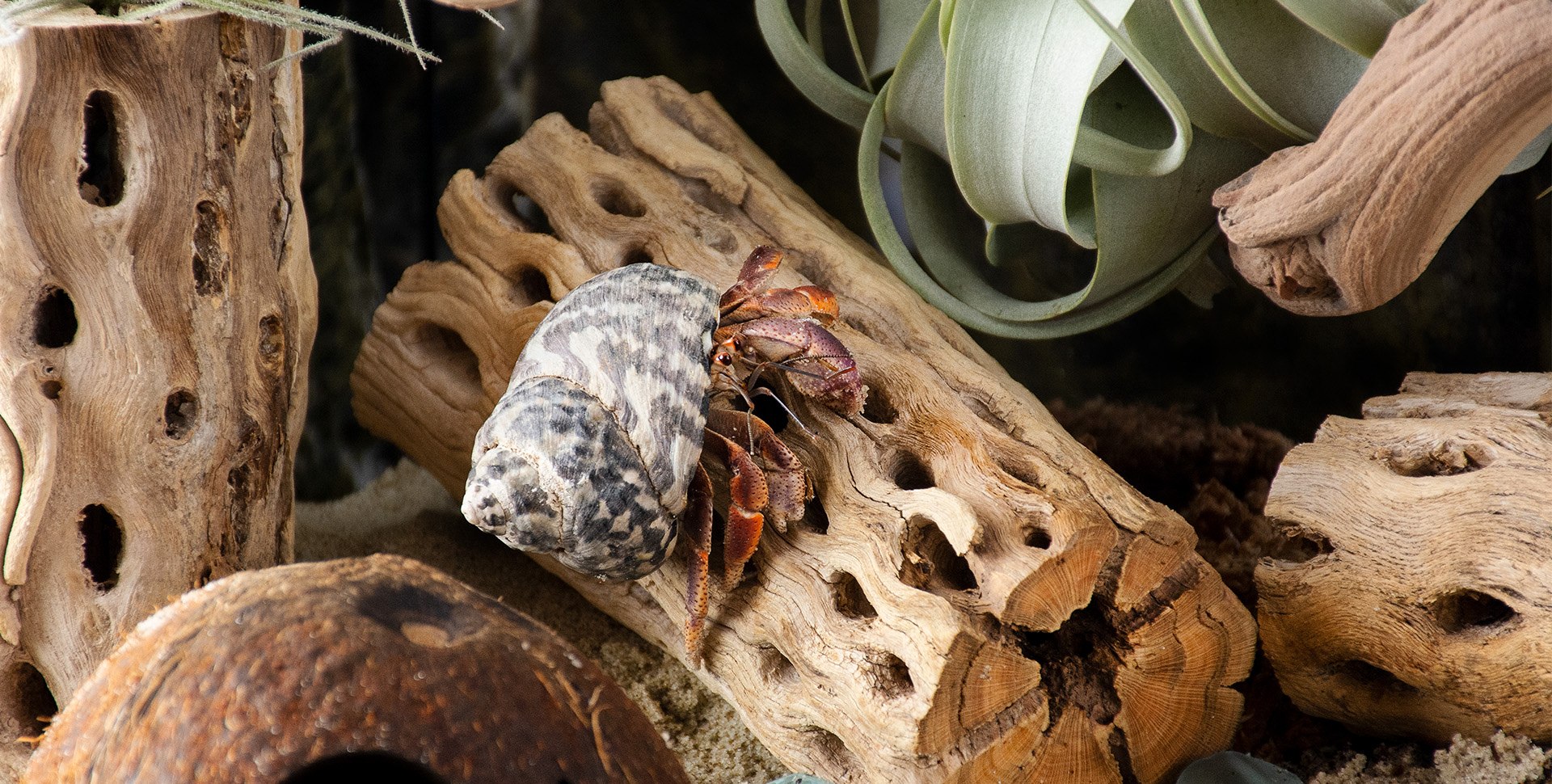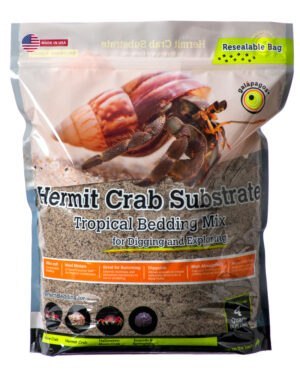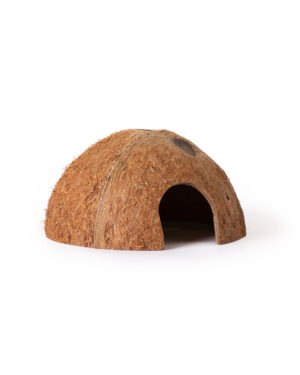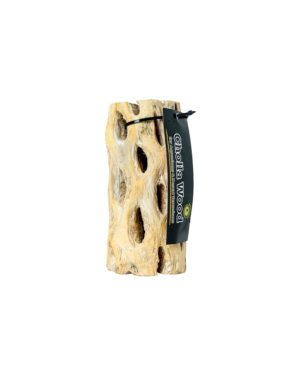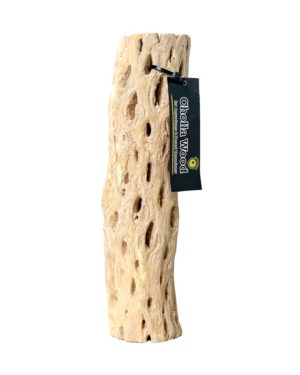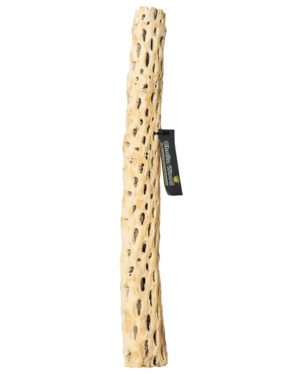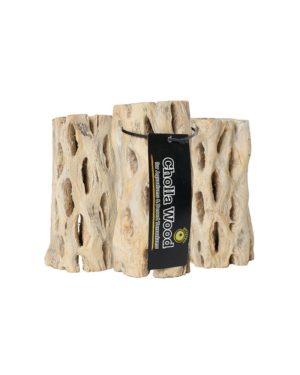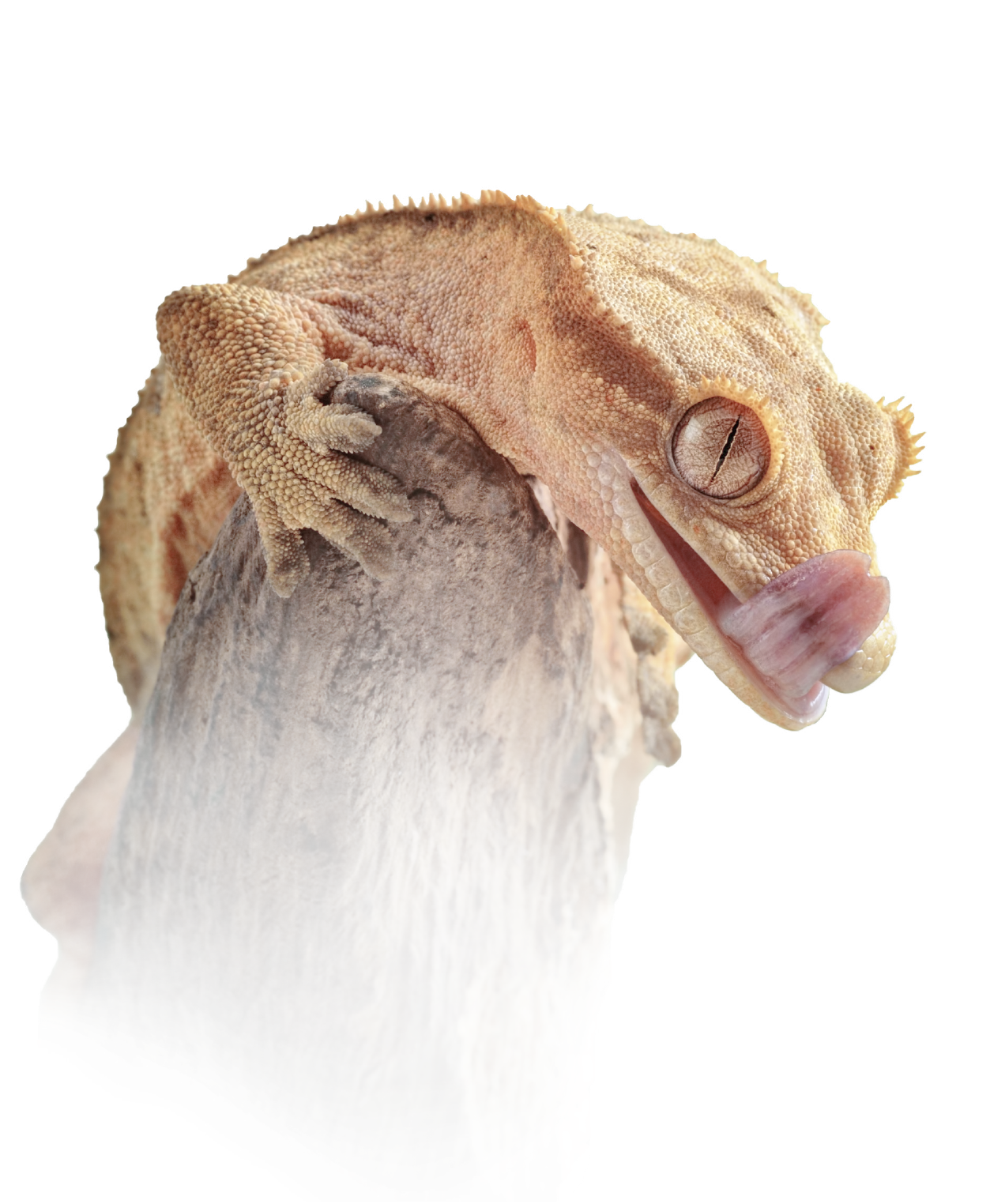Location
Tropical, Coastal
Light
UVB
Temperature
75-85°F
Humidity
75-80%
Most Active
Nocturnal
Lifespan
10-20 years
Size:
Hermit Crabs sizes vary by species. However, adults all tend to range from 2-3 inches. Some common pet species can get up to 6 inches while other species only grow a few millimeters long.
Lifespan:
In captivity, with proper care, Hermit Crabs can live 10-20 years. However, if properly cared for, they can live over 40 years.
Enclosure:
When designing your hermit crab enclosure make sure to remember that they are native to large tropical, humid regions. This means an aquarium with a top is ideal to help hold humidity in. Hermit crabs should be in groups since they are social animals which means a minimum of 10 gallons for 2 small crabs and larger tanks when adults. Ideally a minimum of a 30 gallon tank for small groups of adults (2-4).
Temperature & Humidity
Hermit Crabs thrive in slightly warmer than room temperature settings with the ideal gradient at around 78-85 degrees Fahrenheit. Night time temperatures should not drop below 75 degrees. More than a few hours at 95+ degrees or above can be deadly. The easier way to maintain these temperatures is using a U.T.H. (Under Tank Heater) attached to the back of the tank with a thermostat. Make sure to monitor your enclosure temperatures for a couple days in a row before adding your Hermit Crab and keep them out of direct sunlight. Remember that if you decide to run lights for live plants, the heat emitted from the lights will increase the temperature by a couple degrees.
Humidity should be kept around 75-80 percent at all times. Mist as needed to keep the proper humidity. One of the best ways to maintain humidity is by using a large amount of golden sphagnum moss. Golden Sphagnum Moss is one of the highest quality mosses that holds humidity better than any other moss and is very mold resistant.
Another great way to help control and maintain humidity while making your enclosure more natural, is with additional mosses and live plants. Green Sphagnum Moss, Royal Pillow Moss, Sheet Moss, Pillow Moss, bromeliads, and ferns are all excellent at storing and maintaining humidity.
Substrate
Hermit Crabs love to dig and burrow. There are a variety of mixtures available but the most commonly used mixture is 5:1 play sand to Coconut Soil. This substrate should be moist enough to keep its shape when squeezed but not drip water. Hermit crabs need a very deep substrate layer. This layer should be at least four times deeper than the width of the crab. This often means filling up the aquarium halfway with sand.
Hides
Providing multiple safe Hiding Places for your hermit crabs is extremely important to their overall health. A deep substrate layer provides a secure, dark area for the crabs to dig and produce the hormones needed for the molting process. The most essential items in the hermit crab tank is a variety of different size and shape shells that they can move to if needed. Not having a well-fitting shell can cause stress and other health complications.
Plants and commercially available Hides can also be used to provide shade and shelter. The plants and Leaves that make up the foliage can be fake or live depending on your personal preference.
Lighting
There is no special lighting needed for hermit crabs. Normal tube lighting can be used to create a normal day/night cycle. Only use the lights for a maximum of 12 hours as too much light can cause stress.
Feeding
Hermit Crabs are omnivores and scavengers. Fruit, vegetables, and protein (insects, seafood, meat) should be provided daily. Since they are nocturnal, it is best to feed them at night and remove any leftover food in the morning to prevent bacteria or spoiling.
Fresh fruits and vegetables like apples, carrots, mango, kale, and bananas are commonly fed. They will also eat common reptile insects like dried mealworms and crickets. Sprinkling these food items with reptile multivitamins and calcium without D3 is necessary to help produce proper exoskeleton formation.
Water
Hermit crabs need two different water dishes. The first is fresh, dechlorinated water that is used for drinking and hydrating. This dish should be deep enough that they can fully submerge themselves but must have steps or a slope so they can get out with ease. The second dish is their saltwater dish. This dish should only be prepared with salt additives used for marine fish.
Decor
After the necessities, hermit crab enclosures can have any variety of decor that help to add enrichment. Spider Wood, Manzanita, Driftwood, and Cholla Wood are popular additions that act as a centerpiece and anchor for a variety of plants and other accessories. Natural Stones, Mosses, and plants are also a great addition for general stimulation and enrichment with the added benefit of a naturalistic look.
Interesting Facts:
- Most species of hermit crabs are very social. They often form groups or even symbiotic relationships with other species. Some saltwater crabs will carry around sea anemones on their shells for protection.
- Hermit crabs undergo molting, like other crustaceans, and must look for a new shell when they outgrow their last. However, they must be very careful when changing as they are most vulnerable when they do.
- Hermit crabs communicate by chirping and can produce sounds similar to a small frog.
- Shell fighting can occur when there is a lack of suitable shells for crabs and multiple crabs are looking for the same size shell. This fighting can even occur between different species of hermit crabs.
- Birgus latro, or the coconut crab, is the largest terrestrial arthropod and is also a species of hermit crab. These crabs can grow over 3ft from one leg tip to another and weigh up to 9lbs.


